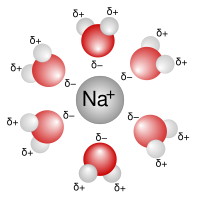
Photo from wikipedia
Human activities have increased the possibility of simultaneous warming and drought, which will lead to different carbon (C) allocation and water use strategies in plants. However, there is no conclusive… Click to show full abstract
Human activities have increased the possibility of simultaneous warming and drought, which will lead to different carbon (C) allocation and water use strategies in plants. However, there is no conclusive information from previous studies. To explore C and water balance strategies of plants in response to warming and drought, we designed a 4-year experiment that included control (CT), warming (W, with a 5°C increase in temperature), drought (D, with a 50% decrease in precipitation), and warming and drought conditions (WD) to investigate the non-structural carbohydrate (NSC), C and nitrogen (N) stoichiometry, and intrinsic water use efficiency (iWUE) of leaves, roots, and litter of Cunninghamia lanceolata, a major tree species in southern China. We found that W significantly increased NSC and starch in the leaves, and increased NSC and soluble sugar is one of the components of NSC in the roots. D significantly increased leaves’ NSC and starch, and increased litter soluble sugar. The NSC of the WD did not change significantly, but the soluble sugar was significantly reduced. The iWUE of leaves increased under D, and surprisingly, W and D significantly increased the iWUE of litter. The iWUE was positively correlated with NSC and soluble sugar. In addition, D significantly increased N at the roots and litter, resulting in a significant decrease in the C/N ratio. The principal component analysis showed that NSC, iWUE, N, and C/N ratio can be used as identifying indicators for C. lanceolata in both warming and drought periods. This study stated that under warming or drought, C. lanceolata would decline in growth to maintain high NSC levels and reduce water loss. Leaves would store starch to improve the resiliency of the aboveground parts, and the roots would increase soluble sugar and N accumulation to conserve water and to help C sequestration in the underground part. At the same time, defoliation was potentially beneficial for maintaining C and water balance. However, when combined with warming and drought, C. lanceolata growth will be limited by C, resulting in decreased NSC. This study provides a new insight into the coping strategies of plants in adapting to warming and drought environments.
Journal Title: Frontiers in Plant Science
Year Published: 2022
Link to full text (if available)
Share on Social Media: Sign Up to like & get
recommendations!